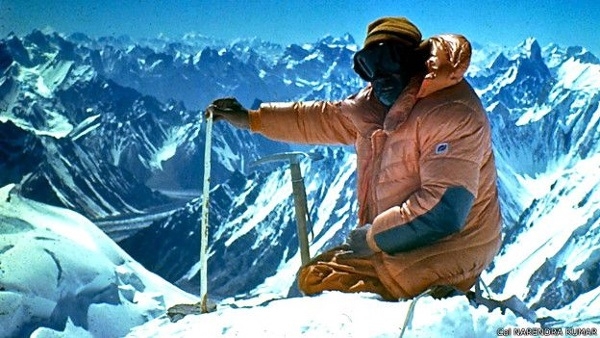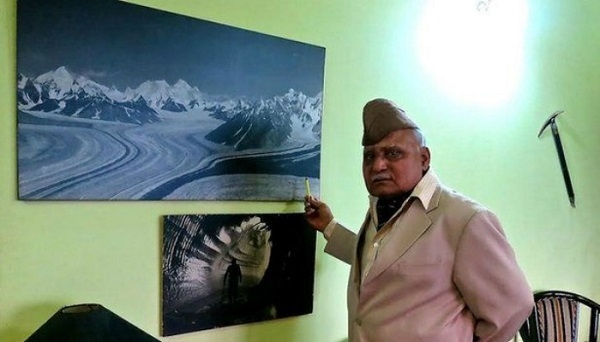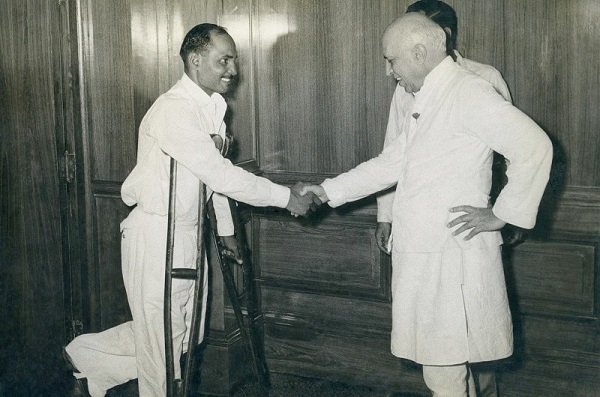Col. Narendra 'Bull' Kumar : India lost an unsung hero of the Indian Army
Total Views |
India has a point of strategic advantage against both Pakistan and China, that is the Siachen glacier. However, it is no less than a misfortune that Indians are able to know about the legend who explored the region for India only after his death. Col Narendra 'Bull' Kumar remains to be an unsung hero of the Indian armed forces, with his tales of bravery being explored by the people after his demise.

Colonel (retd) Narendra Kumar, a legendary mountaineer and a brave soldier of the Indian army, who had spotted Pakistani activities around the Siachen glacier in 1984 and eventually helped India secure it, passed away by the end of 2020, on Dec 31, at the Army's Research and Referral Hospital, New Delhi.
The Prime Minister of India, Narendra Modi paid tribute to the legend through a tweet stating "An irreparable loss! Colonel Narendra 'Bull' Kumar (Retired) served the nation with exceptional courage and diligence. His special bond with the mountains will be remembered. Condolences to his family and well-wishers. Om Shanti."
Who was Col. Narendra Kumar?
India has had several legends from the armed forces. Every one being different and significant in their contribution to the nation. Col. Narendra Kumar was one such brave officer of the Indian army, whose legends of mountaineering have made him countable to be one of the finest mountaineers of the country. Col. Narendra as a kid had born and grown up in British India's Rawalpindi. Kumar had participated in the World Scout Jamboree and had gone to Paris at the age 13, in 1947. By the time he returned back, the India that he had grown up into was divided into two different states. The ship that was carrying him back to India, had directly brought him to Bombay, while the Muslims on the ship had de-boarded at the Karachi port. Later in 1950, Narendra Kumar joined the Indian army. He was commissioned in the Kumaon rifles regiment in 1954.

What is the story of being called the 'Bull' Kumar?
Narendra Kumar was alumnus of the Indian Military Academy, Dehradun, which was then known as the Joint Services Wing. His story of earning the title of the 'Bull' begins from the same institution. Once, at the academy, Kumar had to participate in a boxing match with a senior cadet. The cadet he was to fight the match with was a trained boxer whereas Kumar had no experience in the sport.
After getting beaten up in the first two rounds, Narendra Kumar knocked down the senior cadet strongly in the third round. The Commandant and Deputy Commandant present at the match were satisfied with his performance that he had fought the fight with the spirit of a bull. That is since when, Narendra Kumar was well known all around the academy as 'Bull' except Narendra.
“The senior cadet who was knocked down by the bull during the boxing match that day turned out be none other than Gen Sunith Francis Rodrigues, who later became the Chief of Army Staff.”
The title of 'Bull' was given to him when he was only a cadet at the academy. But Col Narendra Kumar leveled up the relevance of the title at every stage of his life and every time he faced a more severe challenge. Col Kumar maintained the dignity of the title given to him through out his life and never let the spirit of 'bull' die, that he had inside him.
Col 'Bull' Kumar's mountaineering expeditions
Narendra Kumar had not been a mountaineer since forever. It was only after he was commissioned in the Kumaon Rifles in 1954, that he was exposed to winter sports and mountaineering. But once he started mountaineering, he only ended up becoming a legend.
'Mountaineering' was certainly his own choice since when he had applied to join the mountaineering course at the Himalayan Mountaineering Institute (HMI) of Darjeeling in 1958, his Commandant had initially not granted him the permission. It was only after seeing Kumar's readiness to give up on his annual leave, only to learn mountaineering, that he was given the permission.
It was at the HMI that Kumar met Tenzing Norgay, who one of the first two individuals known to have ascended the Mount Everest. With the company of Tenzing Norgay, Narendra Kumar's interest in mountaineering further geared up. He became the first Indian to climb Mount Nanda Devi and the series of adventure kept on going with Mount Everest in 1965, Mount Blanc in the Alps and later Mount Kanchenjunga, which is tallest peak of the Himalayas on the Indian side. He had played a very vital role for the Antarctica Task Force, in 1981.
Bull's connection with Operation Meghdoot

The Indian army set out on Operation Meghdoot in April 1984, which was to take control of the Siachen glacier. However, there was loads of geagraphic, climatic and topographic information and data that was necessary to form the basis of the operation. This data was provided by Narendra Kumar's initial expeditions that he carried out around the Siachen region. His expeditions to the Siachen glacier, and the detailed topographical mapping exercise, as well as photographs and videos from his expeditions helped the then Prime Minister of India, Indira Gandhi, to authorize Operation Meghdoot.
When Kumar was the Commanding Officer at the Indian Army's High Altitude Warfare School in 1977, a German rafter had approached him, to seek help for a descent on the Nubra river. While helping the German individual, Kumar spotted a cartographic error in the US demarcated map that showed the line marking the ceasefire agreement between India and Pakistan incorrectly. He informed India's then Director of Military Operations, Lt Gen M L Chibber about the same and all the arrangements were made for Kumar to lead a reconnaissance mission to the glacier.
Before the operation, Kumar went to the glacier twice with his team. After his first visit, the team returned with remains left behind by Pakistan's incursions into the region. He returned back to the glacier in 1981, when became the first to climb the Siachen Glacier, the world's second longest non–polar glacier. He gathered all the important information during his two visits and published accounts of his expeditions in the news magazine The Illustrated Weekly of India. He also published reports of his expedition in the Himalayan Journal. The first account was of the Teram Kangri I ascent in Oct 1978, while the second account was in 1981 of Sia Kangri and Saltoro Kangri.
“His expeditions in the Siachen region have elevated India's position in the Himalayas. It was only because of the data provided by Col (Retd) Narendra 'Bull' Kumar's Siachen expeditions that India is today standing firm in the Himalayas and has dominated both Pakistan and China over the years, which even today remains to be our strength during the ongoing conflict at the LAC. ”

